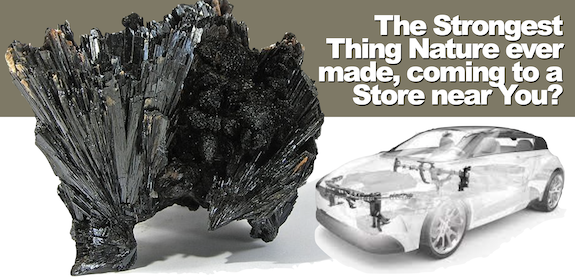The Strongest Thing Nature ever made, coming to a Store near You?

It may have escaped general attention that the strongest-known materials in the living world are the teeth of tiny limpets that the mollusks use to scrape food off rocks.
There was a report out on the subject in 2015 but I think more attention was being given at the time to fracking, $15 oil, and predictions that a long new era of cheap fossil fuels is upon us. As the German poet Johann von Goethe observed, the soul that sees beauty may sometimes walk alone.
These composite materials are as strong as Kevlar or carbon fiber — and you never hear about limpets and the landfill crisis, do you?
So, it’s meaningful news that a team from the University of Portsmouth have managed to create a composite material by bio-mimicking the formation of limpet teeth. A new report in Nature Communications is out on the topic, here.
Lead author Dr Robin Rumney, from the University’s School of Pharmacy and Biomedical Sciences, notes: “Fully synthetic composites like Kevlar are widely used, but the manufacturing processes can be toxic, the materials difficult and expensive to recycle.”
The Materials Backstory
Back in 2018, Asa Barber also of the University of Portsmouth said, “Until now we thought that spider silk was the strongest biological material because of its super-strength and potential applications in everything from bullet-proof vests to computer electronics, but now we have discovered that limpet teeth exhibit a strength that is potentially higher.”
The secret appears to be a substance called goethite, which is not exactly rare, it’s one of the primary forms in which iron ore appears, and it’s commonly found in rust. The unusual thing is to find an organism which can make goethite in its mouth and mixing it with the chitlin that is more commonly associated with mollusks. These goethite fibers, and yes they were named for Goethe.
As we explored recently in our look at the new company Modern Synthesis and its technology, the secret of the limpet is in the lattice and not only in the materials. The lacing os chitlin and goethite, that’s the secret of limpet tech. Now, researchers developed methods which allowed these cell populations to grow outside of their natural environment on serum-coated glass, where they deposited chitin and iron oxide just as in the limpet tooth.
Remarkably, the researchers reported that after two weeks they self-organized into structures that resembled the limpet organ, known as the radula, which makes the teeth. This kind of extremely powerful regeneration has also been observed in sponges, but they lack the complex arrangement of tissues and organs found in limpets and other mollusks.
Research leaders Dr Rumney found ways of growing ribbons of teeth from tissue samples and individual teeth from populations containing stem cells. After successfully replicating the limpet tooth formation, the team was then able to produce samples of biomaterial half a centimeter wide. They did this by mineralizing a sheet of chitin, which is a waste by-product of the fishing industry found in the exoskeletons of crustaceans, crabs, and shrimps.
Next steps
Now that proof of concept has been established, Dr Rumney and the team want to explore the possibility that these minidiscs can be scaled up and mass manufactured.
And as the research team observed, the solution of the crisis of plastics in the sea might be solved using technology from the sea itself. It may turn out that plastics were not so much as a bad technology and the wrong technology to scale — other materials have always been available that had better properties of strength and hardness.
As Goethe once said, “the hardest thing to see is what is in front of your eyes.”
We might vary that quote. Perhaps the hardest thing is what is in front of your eyes. Hulls, plastics for vehicles, hard packaging, body protection. Just think of the applications. More to come from this space, for sure.
Category: Top Stories















